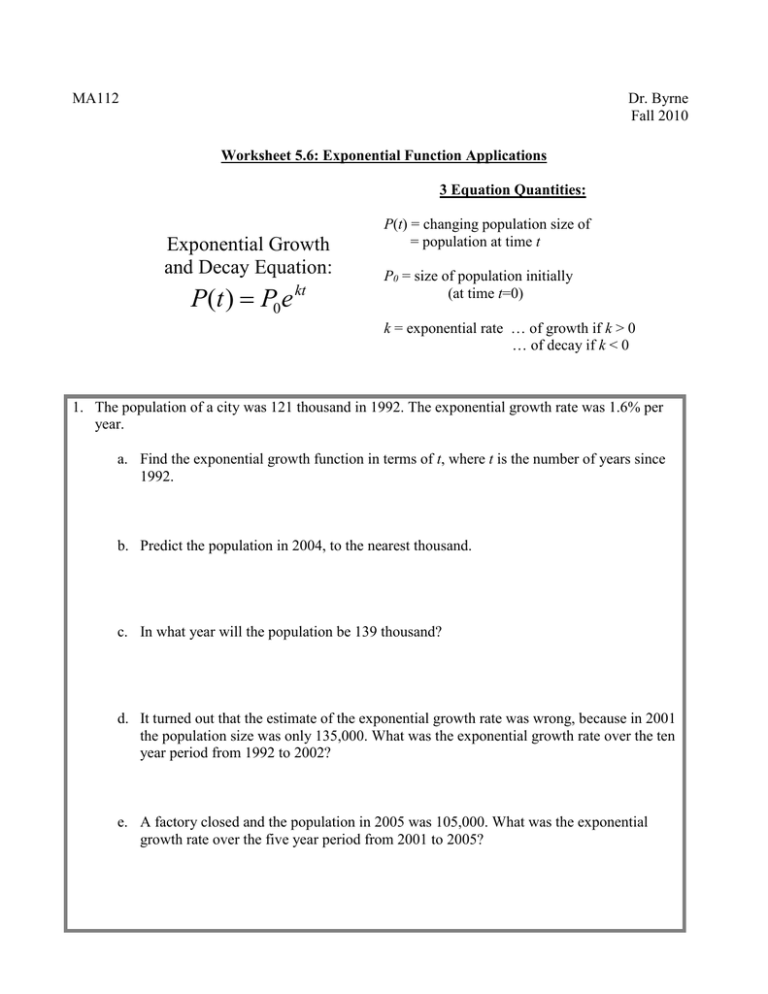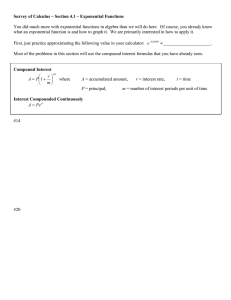e P t
advertisement

MA112 Dr. Byrne Fall 2010 Worksheet 5.6: Exponential Function Applications 3 Equation Quantities: Exponential Growth and Decay Equation: P(t ) P0 e kt P(t) = changing population size of = population at time t P0 = size of population initially (at time t=0) k = exponential rate … of growth if k > 0 … of decay if k < 0 1. The population of a city was 121 thousand in 1992. The exponential growth rate was 1.6% per year. a. Find the exponential growth function in terms of t, where t is the number of years since 1992. b. Predict the population in 2004, to the nearest thousand. c. In what year will the population be 139 thousand? d. It turned out that the estimate of the exponential growth rate was wrong, because in 2001 the population size was only 135,000. What was the exponential growth rate over the ten year period from 1992 to 2002? e. A factory closed and the population in 2005 was 105,000. What was the exponential growth rate over the five year period from 2001 to 2005? 2. Suppose that P is invested in a savings account in which interest, k, is compounded continuously at 5% per year. The balance P (t ) after time t, in years, is P(t ) Pe kt . a. What is the exponential growth function in terms of P and 0.05? b. If $2000 is invested what is the balance after 8 years? Round your answer to the nearest cent. c. When will an investment of $2000 double itself? d. When will an investment of $5,300 double itself? e. What is the doubling time of the savings account? 3. Suppose that a bacteria population is growing at 3% per day. What is the population doubling time? 4. The decay rate of a certain chemical is 9.4% per year. What is its half-life? 5. The amount of carbon-14 present in animal bones after t years is P(t ) Pe 0.00012 t . A bone has lost 24% of its carbon-14. How old is the bone?




